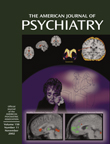Erik H. Erikson, one of the best-known and most influential psychoanalysts in the United States and perhaps in the world, deeply affected the mental health field and all the disciplines that draw on an understanding of the human condition and how it develops. He is especially acclaimed for his landmark contributions to the crises of youth and adolescence, his insights into the conflicts of minorities and women, and his pioneering efforts in the field of psychohistory. Because he was a gifted storyteller, Erikson was widely read by the general public, and his now familiar concepts of identity crisis and life cycle have been incorporated into the common speech of all nations.
Robert Coles, a Harvard child psychiatrist and psychohistorian, has compiled an anthology of selected works over the course of Erikson’s career to illustrate his talents as theoretician, biographer, clinician, and moral philosopher. The Erik Erikson Reader is organized along four lines. For each, Coles provides a preface explaining that stage of Erikson’s professional interest and mapping for the reader the prevailing social and psychological climate in which Erikson made his observations.
Because this is an Erikson reader, Coles limits his own contributions to a scant 21 pages in a volume of 526 pages. Although brief, they provide a helpful orientation and insightful perspectives to guide the reader along the course of Erikson’s thinking. The majority of the selected works are old “chestnuts,” long familiar to college undergraduate and postgraduate students as well as trainees in the mental health fields.
The first section, On Children: Nearby and Far Away, contains four selections from Childhood and Society. This well-known book, written in 1950, attempted to integrate the concepts of intrinsic wisdom and unconscious cultural conditioning with the ongoing processes of individual psychosexual development. The first selection, “Hunters Across the Prairie,” focuses on the Oglala subtribe of the Sioux. The second selection, “Fishermen Along a Salmon River,” compares the Sioux with the Yurok, a tribe of fishermen and acorn gatherers on the Pacific coast of the United States. “A Neurological Crisis in a Small Boy: Sam” is a case study of a white child in the majority culture, and the last selection, “Toys and Reasons,” is a clinically oriented examination of childhood situations that illustrate the capacity of the ego to resort to recreation and seek self-cure through the activity of play.
The second section, On Psychoanalysis and Human Development, draws on Erikson’s Insight and Responsibility, published in 1964. Coles has selected three addresses from the book. The first was delivered to commemorate Sigmund Freud’s 100th birthday at a ceremony held at the University of Frankfurt in 1956 and provided Erikson with the opportunity to reintroduce the discovery of psychoanalysis to a new generation of German students following the aftermath of World War II. The second address, “The Nature of Clinical Evidence,” was presented at an interdisciplinary symposium at the Massachusetts Institute of Technology in 1957 and is an exposition of the meaning of clinical experience for psychoanalysis. The last address, “Human Strength and the Cycle of Generations,” expanded on a presentation at the Mt. Zion Medical Center in 1960 and deals with the shift of focus from the inner and outer hazards of ego development to the basic human strengths that evolve with man’s prolonged childhood and with his institutions and traditions. Most readers have less familiarity with these expositions than with Erikson’s more popular writings.
In the third section of the book, On Leaders, Coles assembles selections from Childhood and Society, Young Man Luther, Dimensions of a New Identity, and Gandhi’s Truth. Coles highlights the biographical side of Erikson’s interests and the latter’s curiosity regarding what makes for leadership and how leaders emerge and for whom. From Childhood and Society, Coles selects “The Legend of Maxim Gorky’s Youth.” From Young Man Luther, he chooses “The Fit in the Choir,” “The Meaning of ‘Meaning It,’ ” and “Epilogue.” From Dimensions of a New Identity, he includes “The Perspective of the Mount” and “Protean President.” From Gandhi’s Truth, Erikson’s best known psychocultural study, Coles includes “Homo Religiosus,” “The Instrument,” and “March to the Sea.”
In the final section of this book, On Moral Matters, Coles reveals Erikson’s thoughts on ethics, especially social ethics, and the rights and wrongs of contemporary society. Coles’s preface is especially pertinent as he describes Erikson’s concern with the disparity so frequently observed in those who are apparently successful in worldly accomplishments but fail to measure up in areas considered to be human and moral.
This collection of the essential Erikson will be warmly embraced by those practitioners and academics who grew up professionally with his works and will be gratefully received by present-day students who have yet to encounter his original and keen insights.

